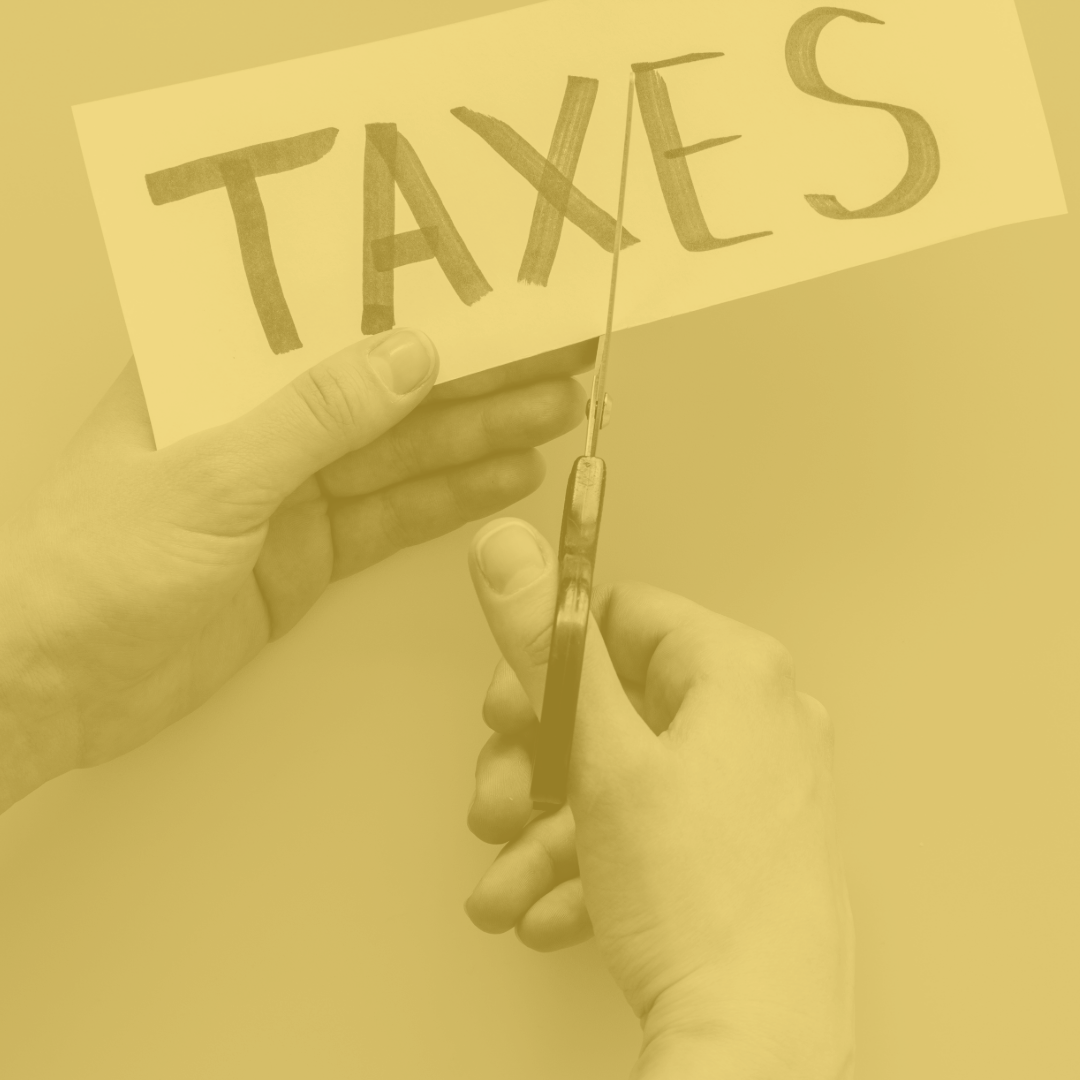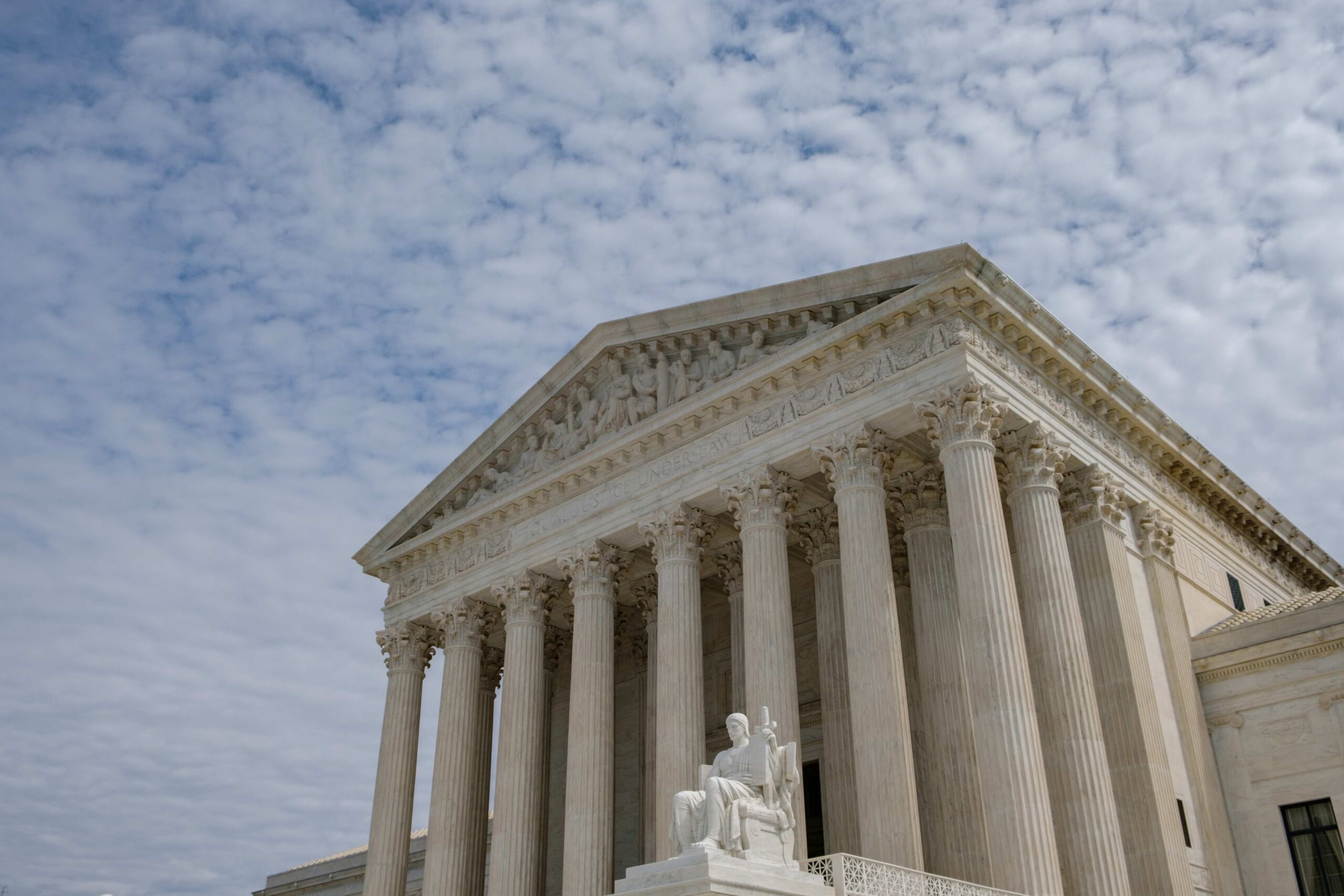Musings on the Death of Chevron
“Can Loper be used to reinvigorate the chorus of objections to the SCOTUS line of decisions on patent eligibility? Time will tell.”
“Ding-Dong, the Witch is Dead”—the Witch being the extraordinary agency overreach into law that Congress never passed, emboldened by the 1984 U.S. Supreme Court (SCOTUS) case of Chevron U.S.A. v. Natural Resources Defense Council, 467 U.S. 837, and enabled by a weakened judiciary told to give agency action presumptive deference on the construction and application of federal statutes.
Loper Bright v. Raimondo, (603 U.S. ___ (2024)), issued June 28, 2024, almost 80 years after the 1946 enactment of the Administrative Procedure Act (APA) and 40 years after the Chevron decision, may usher in a new era with a breath of fresh air. Loper reminds us of the quote from James Madison: “In framing a government which is to be administered by men over men, the great difficulty lies in this: you must first enable the government to control the governed; and in the next place oblige it to control itself.” The Federalist No. 51, at 322 (James Madison) (Clinton Rossiter ed., 1999).
I highlight here eight musings I take from the Loper Bright opinion relevant to patent practice.
1. Humility or Hubris?
SCOTUS actually admitted it was wrong! And not just kind of wrong—very wrong, and over a long period of time. And it admitted there was no “reason to wait helplessly for Congress to correct our mistake.” SCOTUS said “part of ‘judicial humility’…is admitting and in certain cases correcting our own mistakes, especially when those mistakes are serious…”. Wow. When was the last time we heard SCOTUS admit it made a serious mistake? That takes courage and maybe even, as dissenting Justice Kagan labeled it, hubris. Regardless of the characterization, this 6:3 decision penned by Chief Justice Roberts and joined by Justices Thomas, Alito, Gorsuch, Kavanaugh and Barrett, with concurring opinions by Justices Thomas and Gorsuch, and dissents from Justices Kagan, Sotomayor and Jackson, was bold for the Court. The decision appeared to be down philosophical lines. This is almost a complete flip from the Chevron decision, penned by Justice Stevens and joined by Justices Burger, Brennan, White, Blackman and Powell, with Justices Marshall, Rehnquist and O’Connor recusing.
2. Constitution in Focus
SCOTUS went back to the Constitution and quoted often from the Federalist papers. According to Justice Thomas, “[t]o safeguard individual liberty, structure is everything”, quoting from Justice Scalia. Justice Roberts reminded that Article III of the Constitution assigns to the Federal Judiciary the responsibility to adjudicate “Cases” and “Controversies”, and quoted from Alexander Hamilton, that the courts would by design “exercise neither FORCE nor WILL but merely judgment”. The Framers structured the Constitution to allow judges to exercise that judgment independent of influence from the political branches. This comes close to home territory for patent attorneys, who have seen senators from the Legislative Branch urge the U.S. Patent and Trademark Office (USPTO) from the Executive Branch to regulate where it was unable to legislate. Blurring the structural lines demarcated in the Constitution always leads to mischief that eventually has to be cleaned up.
One might argue that this bold emphasis on the Constitutional framework is self-serving by the Court because it reinforces the Court’s own preeminent authority to interpret and apply the law. However, SCOTUS was not correcting a mistake made by another encroaching branch of government, it was correcting its own mistake, which had opened the barn door to encroachment by the Executive Branch.
3. Patent Eligibility
Given SCOTUS’ renewed appreciation for the structure of government set out in the Constitution, would it show the same kind of insight to admit that it itself also passed the line of interpretation and soundly entered the realm of legislation, the exclusive jurisdiction of the Legislative Branch, when it created the now infamous judicial exceptions to patent eligibility? In that case, SCOTUS would have to admit another mistake—and again, a big one. And we can’t forget Henry Schein, Inc. v. Archer & White Sales, Inc. (139 S.Ct. 524 (2019)), where a new Justice Kavanaugh wrote for the Court that there was no statutory authority for a judicial exemption to the Federal Arbitration Act.
The article that I co-wrote with Anthony Prosser on the ”Unconstitutional Application of 35 U.S.C. §101 by the U.S. Supreme Court (18 J. Marshall Rev. Intell. Prop. L. 999 (2018)) has renewed relevance. With foreshadowing of the issues discussed in Loper, in 2018 we wrote:
“In law school, we learn that there is no right without a remedy. In the case of Marbury v. Madison, the U.S. Supreme Court held that it can review the constitutionality of federal statutes. However, who oversees the constitutionality of U.S. Supreme Court decisions? There is no private right of action in the U.S. for this. The sole remedy is to urge Congress to pass a law reversing the Supreme Court position. However, why should Congress have to pass a new law when the current law is clear on its face, just to say, we meant what we said the first time?”
The Supreme Court’s statement in Loper that there was no reason to wait for Congress to fix the Supreme Court’s mistakes is relevant to all of the recent tireless efforts to pass a law to override SCOTUS’s patent eligibility case law, such as the Patent Eligibility Restoration Act (“PERA”). Can we go back to the Supreme Court now, waiving the Loper decision and ask that they fix 101 so we don’t have to fix it legislatively? Can Loper be used to reinvigorate the chorus of objections to the SCOTUS line of decisions on patent eligibility? Time will tell.
4. What Happens to ODP?
How does Loper affect the explosive agency misuse and expansion of the judicially created, non-statutory, doctrine of obviousness-type double patenting? In this case, the culprits are both the USPTO and the Federal Circuit, which have together joined in the act of legislation where none directly exists on point (thus, the moniker “judicially created, non-statutory”). In the case of the terminal disclaimer fiasco, we have the opposite situation from Loper, where the Supreme Court had previously ceded jurisdiction to agencies. In the case of terminal disclaimers, the courts and the USPTO are taking power constitutionally given to Congress. Would the Supreme Court be as willing to give back the power the courts have taken from Congress, as it was in Loper to take back power that it voluntarily gave away? It is never as easy to give back as to take back, especially for those in government.
5. General Implications for USPTO Rules
With regard to the barrage of desired rulemaking by the USPTO, the Office will now have to step back and consider if it needed Chevron deference or Skidmore deference from the courts to uphold its regulations, or interpretation of statutes.
The Tafas and GSK v. Dudas case was filed in 2007 in the U.S. District Court for the Eastern District of Virginia (CA 1:07cv1008) to challenge a set of rules (72 Fed. Reg. 46,716 (Aug. 21, 2007)) proposed by the USPTO that would limit the number of continuations and RCEs that could be filed without filing a Petition showing that the claims or evidence could not have been submitted before; limiting the number of claims in a patent application to 25 with 5 independent claims; and requiring an onerous examination support document. The district court held that the rules exceeded the USPTO’s rulemaking authority under 35 U.S.C. § 2(b)(2).
Importantly, in contrast to the district court, the Federal Circuit relied on the Chevron decision to give the USPTO broad deference and rulemaking authority to conduct business at the agency and approved all of the Final Rules based on Chevron except the most important one—the limitation on continuations. The Federal Circuit in the Tafas case emphasized that “Our precedent is clear that the Chevron framework is applicable to the review of these rules”, citing to Lacaverna v. Dudas, 441 F.3d 1380, 1383 (Fed. Cir. 2006 and Cooper Technologies Co v. Dudas, 536 F.3d 1330, at 1336-7. This decision was vacated when the Federal Circuit agreed to take the case en banc and then settled. This Chevron approach had seemingly been used to support the myriad of proposed rules recently pumped out of the USPTO.
What now happens to the interpretation of 35 U.S.C. § 2(b)(2) after the death of Chevron? It seems clear that the deference to the USPTO to fill in legislative gaps and to legislate via regulations will be curbed.
6. In re Cuozzo
SCOTUS referred to In re Cuozzo (579 U.S. 261 (2016)) multiple times in the Loper opinion, and at each point, it appeared to be swallowing a distasteful food. It repeatedly referred to the fact that the Court has “avoided deferring under Chevron since 2016,” implicitly referring to Cuozzo, as well as that “Chevron’s justifying presumption is, as Members of the Court have often recognized, a fiction” citing to the concurrence by Justice Thomas in Cuozzo (579 U.S. at 286). In Cuozzo, Justice Breyer, writing for the court, held that under 35 U.S.C. §316(a)(4), which gives the USPTO authority to create rules governing inter partes review, there was a gap in the statute about whether the USPTO could establish which standard of review should be used for inter partes reviews (IPRs), and therefore under Chevron, the USPTO was allowed to decide to use the broadest reasonable construction standard. And as we know, later, the next USPTO Director, Andrei Iancu, used this same authority to change the standard of review to match the court standard of review in Philips requiring that claims be construed according to their plain and ordinary meaning.
Perhaps the most important aspect of Cuozzo is Justice Thomas’ foreshadowing concurrence, in which he states that “today’s decision does not rest on Chevron’s fiction that ambiguity in a statutory term is best construed as an implicit delegation of power to an administrative agency to determine the bounds of the law” Cuozzo, Thomas concurrence at 1.
“The Court avoids those constitutional concerns today because the provision of the American Invents Act at issue contains an express and clear conferral of authority to the Patent Office to promulgate rules governing its own proceedings….And by asking whether the Patent Office’s preferred rule is reasonable..the Court effectively asks whether the rulemaking was ‘arbitrary, capricious, an abuse of discretion or otherwise not in accordance with law,’ in conformity with the Administrative Practices Act, 5 U.S.C. §706(2)(A).”
7. Stare Decisis and Statutory Decisis
Loper shows us that Justice Kagan’s love for stare decisis is not held at the same level of esteem by the majority of her current fellow Justices, and certainly not by Justice Gorsuch, who spent his entire concurrence rebutting it. This is reminiscent of a case of the opposite outcome, Kimble v. Marvel (576 U.S. 446), wherein Justice Kagan wrote for a majority (Scalia, Kennedy, Ginsberg, Breyer and Sotomayor) against a vigorous dissent by Justice Alito, joined by Chief Justice Roberts and Justice Thomas. The issue was whether our patent statutes prohibit the payment of royalties after the expiration of a patent, as held by Brulotte v. Thys Co. (379 U.S. 29 (1964)). Justice Kagan wrote:
“Respecting stare decisis means sticking to some wrong decisions. The doctrine rests on the idea, as Justice Brandeis famously wrote, that it is usually ‘more important that the applicable rule of law be settled than that it be settled right.’ Burnet v. Coronado Oil & Gas Co., 285 U. S. 393, 406 (1932) (dissenting opinion)….…. What is more, stare decisis carries enhanced force when a decision, like Brulotte, interprets a statute. Then, unlike in a constitutional case, critics of our ruling can take their objections across the street, and Congress can correct any mistake it sees…. Indeed, we apply statutory stare decisis even when a decision has announced a ‘judicially created doctrine’ designed to implement a federal statute. Halliburton, 573 U. S., at ___ (slip op., at 12). All our interpretive decisions, in whatever way reasoned, effectively become part of the statutory scheme, subject (just like the rest) to congressional change.”
Justice Alito in dissent stated: “The Court employs stare decisis, normally a tool of restraint, to reaffirm a clear case of judicial overreach. [Brulotte] was not based on anything that can plausibly be regarded as an interpretation of the terms of the Patent Act. It was based instead on economic theory —and one that has been debunked.”
Justice Kagan’s dogma was frightening to all of us who do not want the string of SCOTUS Supreme Court cases interpreting 35 U.S.C. 101 patent eligibility to remain law simply through “statutory stare decisis”. But now, all of the Justices in the majority in Kimble except Justices Kagan and Sotomayor are gone and Loper has brought in a new majority that is not keen on stare decisis, and hopefully, not statutory decisis. Maybe a light in this tunnel? And if Brulotte/Kimble are challenged again, patent royalties that extend beyond the expiration of the licensed patent may become acceptable.
8. Terms of the Administrative Practices Act Prevail Going Forward
A quick search on Lexis/Nexis identified that the Chevron case has been cited by courts and agencies over 20,000 times, most of which were at the district court level. At the Federal Circuit Chevron has been cited in over 500 cases, and at least 85 of the cases also have the word “patent”.
The Loper Court stated that “we do not call into question prior cases that relied on the Chevron framework”. And just to confuse everyone, Chief Justice Roberts wrote “The holdings of those cases ….are still subject to statutory stare decisis despite the Court’s change in interpretive methodology… Mere reliance on Chevron cannot constitute a ‘special justification’ for overruling such a holding, because to say a precedent relied on Chevron is, at best, ‘just an argument that the precedent was wrongly decided.’”
Where do we go from here? All USPTO actions must be evaluated solely based on §706 of the APA, on whether the agency action is (i) arbitrary, capricious, an abuse of discretion or otherwise not in accordance with law; (ii) contrary to a constitutional right, power, privilege or immunity; or (iii) in excess of statutory jurisdiction, authority, or limitations, or short of statutory right. And with regard to Patent Trial and Appeal Board (PTAB) proceedings, whether they were carried out without observance of a procedure required by law, unsupported by substantial evidence, or unwarranted by the facts.
This is the new playing field to curb agency overreach.
Image Source: Deposit Photos
Author: DeBuskPhoto
Image ID: 34329439






